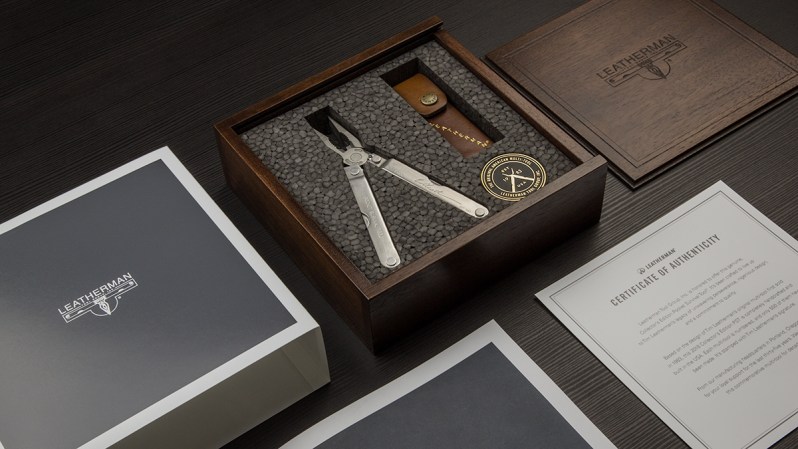Leatherman all began after its founder, Tim Leatherman, and his wife, Chau, found themselves wanting more than just a basic scout knife for all the small repair jobs they encountered on a 1974 trip through Europe. By the time they returned home, Tim had made a decision: if no one else was making the multi-functional tool he was looking for, he’d make it himself.
Armed with sketches he had made on the trip – along with a degree in Mechanical Engineering from Oregon State University – Tim set out to create a brand new wonder-tool that could tackle any project as easily as it could fit snugly into your pocket. After years of prototype-perfecting, Tim sold his first order of what he dubbed Pocket Survival Tools in 1983 and the Leatherman brand was born.
Today, Leatherman is keeping its founder’s spirit of innovation and improvement alive as it celebrates 35 years in business with upgraded and limited-edition releases of some of the brand’s most popular tools.
The Collector’s Edition PST – $275
The first of Leatherman’s products to get the anniversary treatment is the one that started the company all those years ago: the Pocket Survival Tool, more affectionately known as the PST. The Limited-Edition PST, available now exclusively on the company’s website, takes its cues from Tim Leatherman’s original design, featuring needle nose and regular pliers with handles that expand out into a treasure trove of handiness. Among the little pocket handyman’s 14 tools are a Phillips screwdriver, 420HC knife, ruler, can opener and awl, just to name a few. The Collector’s Edition PST is also stamped with Tim Leatherman’s signature and comes with a dapper wooden case emblazoned with the Leatherman logo, a premium leather sheath, a certificate of authenticity, a collector’s coin, and a commemorative t-shirt. The Collector’s PST is only being produced as a limited run of 500 (each stamped with its own number), so don’t dawdle if you want to get your hands on a little bit of Leatherman history.
The Wave+ – $100
The Wave has long been one of Leatherman’s best-sellers, and for good reason. It boasts 17 individual tools, including a 420HC serrated knife, a saw, spring-action scissors, a bottle opener, a diamond-coated file, and more. Made of incredibly durable stainless steel and with a mere 4” closed length, the original Wave is nothing short of a great multi-tool. But, just like the perseverant founder before them, the team at Leatherman couldn’t settle for great – so they gave The Wave a little anniversary makeover. The sturdy stainless steel, perfectly pocket-able size, and huge variety of tools remains, but The Wave is now sporting newly designed pliers that include removable and replaceable 154cm wire cutters, the previous Velcro closure has been replaced with longer-lasting premium metal, and an improved nylon sheath offers better performance, extra durability, and modern styling.
The Charge+ – $140
Another popular model gets a few new features with The Charge+. The original Charge was designed with adventure-seekers in mind, and its recent design upgrades make it more adventure-worthy than ever. With a whopping 19 tools – each of which can be opened and locked with one hand – The Charge+ has you covered on everything from wire strippers and an electrical crimper to the same removable, replaceable wire cutters that were added to The Wave+. The Charge+ also comes with the updated sheath, made with high quality nylon webbing, premium elastic, and reinforced stitching so your multi-tool stays extra safe and secure when stored. A quick-release lanyard ring and attached pocket clip make it easy to secure The Charge+ for safekeeping even on your wildest adventures – which is good, because you’re going to want to take this bad boy with you wherever you go.
All of Leatherman’s new and improved 35th anniversary designs are available now, and unlike the Collector’s Edition PST, The Wave+ and Charge+ will remain permanent staples of the company’s collection.






